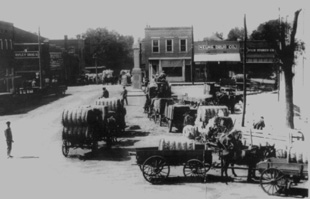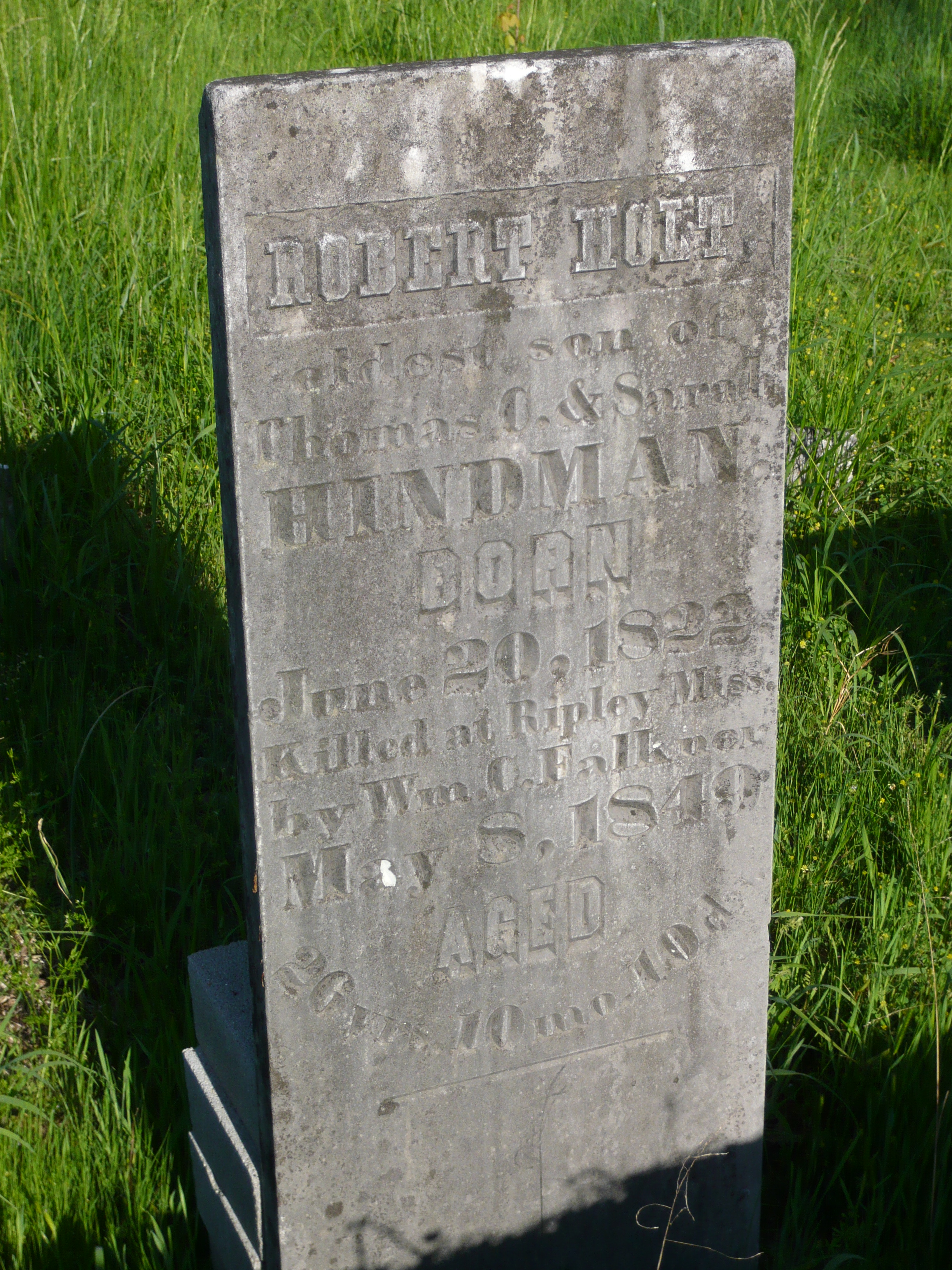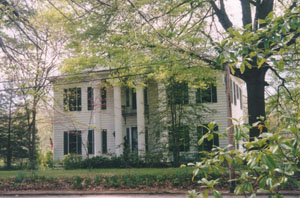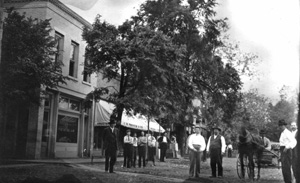 Square - West Side 1909
|
Court Square- Ripley Ripley was incorporated on May 9,
1837.
As is usual in the South, the town was built in the form of a square
with
the courthouse in the center. The first houses were log
structures.
Court was held in a log house on the northeast corner of what is now
the
square, until a brick courthouse was built about 1839. One of the
early stores built in 1839 was a two story structure, weather boarded
in
good style, with ceiling and floors of well-dressed, tongued and
grooved
pine planks. Windows and doors had shutters which opened to the
outside,
protecting the glass. The store was built on brick pillars and
had
a brick chimney, with a fireplace on the first and second floors.
The roof was made of cypress shingles and a stairway ran up the outside
of the building to the second story. The building was given a
good
coat of white paint. The log house gave place to plank houses and
plank houses in turn to brick. The east side of the
square
was the last to have buildings constructed on it.
|
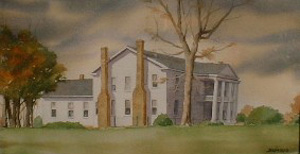 Thomas C. Hindman Home (watercolor by John Armistead) |
This house was built in 1842, for the Hindman family who moved to Tippah County from Alabama. An interesting memoir by Thomas Hindman's daughter tells of the family's move by wagon train and gives other information about early days in the area. The house was the residence of the J. A. Booker family when it burned in January of 1938. About the only thing saved from the burning house was the daughter's Steinway grand piano. The Hindman Cemetery is just east of the site of the original house and the present brick home built after the fire. |
|
|
This gravestone is located in the Hindman Cemetery on the old Hindman Estate. Robert Holt
|
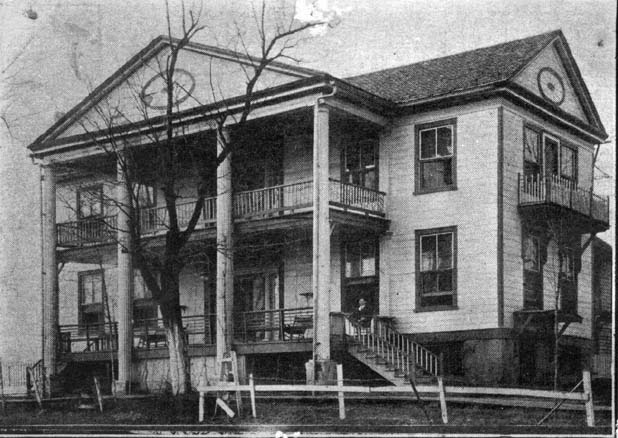
|
This building was known by different names
at
different times in its history. It began with a log structure
that
C. P. Miller had built in 1836. The high front part with its
great
porch was added about 1846. It was a lodging place for travelers
and later a boarding house. In 1926, the building with its
log ell was torn down to build a new hotel. One story is that
after
he had been acquitted of the murder of Erasmus Morris, the 25 year old
W. C. Falkner headed for the hotel to enjoy his dinner. As he
entered
the dining room Thomas C. Hindman, Sr., drew and aimed his pistol at
Falkner
but somehow dropped it. Falkner drew his own pistol but contented
himself with ordering Hindman to leave his weapon where it had
fallen.
The rest of the day proved uneventful.
|
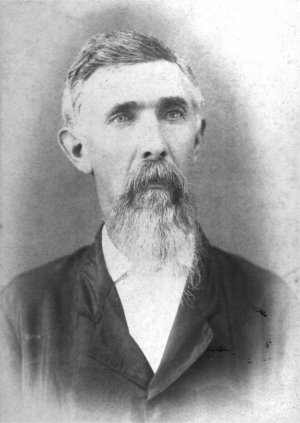 Richard Jackson (Dick) Thurmond |
Col. W. C. Falkner and "Dick" Thurmond were partners in various enterprises including joint ownership of the Ripley Railroad. Their differences of opinions at times turned into altercations between the two. The final one was reported in THE RIPLEY ADVERTISER Nov. 6, 1889.
|
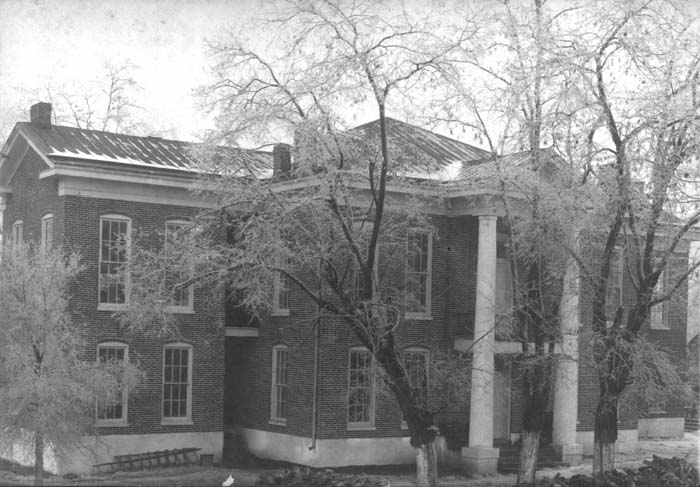
|
Tippah County's first courthouse was a
log building
located on the northeast corner of court square. Two years
later, in 1838, a brick court was built in the middle of the square and
served until 1864 when Federal troops burned the building. The
second
brick courthouse was built in 1870. In 1928, the Board of
Supervisors
decided to, in effect, build a new courthouse. It is believed
that
some material from the older building including most of the foundation,
were used in the present building.
|
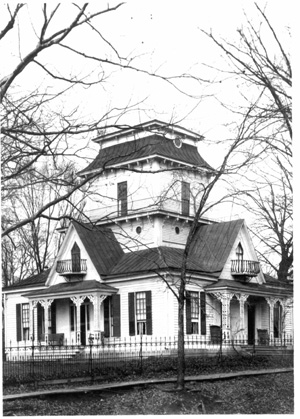 Col. W. C. Falkner's Home |
The home that stood in the center of the
city block
where the Dixie-Net buildings are located today was bought by Col.
Falkner
from R. J. Thurmond shortly after the Civil War. Falkner's home
located
in the vicinity of the Methodist Church had burned during the
war.
The house bought from Thurmond was originally a simple, one-story
building.
Late in 1884, Col. Falkner had the dwelling renovated into a "house of
many gables." The new building of 1884, known as Ripley's
"Italian
Villa," was modeled after houses Falkner had seen in Europe on his tour
in 1883. The house passed out of family possession and a portion
of the lot was sold for the site to build a new post office. It
was
in 1937 that the house was used in the construction of an apartment
house
on the northeast corner of the block. Later, it was used as Dr.
John
Tate's Clinic and as Ripley Medical Clinic until 1993. Parts of
Col.
Falkner's home are still visible in the building such as the stairway
and
metal balcony.
|
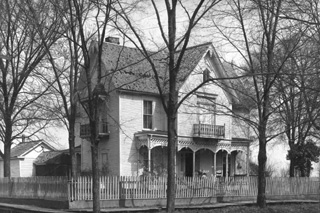 The Dr. N. G. Carter Home |
Dr. N. G. Carter married Willie Medora
Falkner
(1856-1918). Willie was Col. Falkner's first daughter. The
Col. was taken to this house after being shot by Dick Thurmond, about
4:30
p.m. November 5, 1889, and he died there at 10:40 p.m. November
6.
The house stood across Cooper Street, north of Col. Falkner's home
until
the 1960's. When the stained glass window that Willie had had
created
for the First Baptist Church was damaged, she had it removed from the
church
and installed in this house. It was thought to have been
destroyed,
but in 1989 was rediscovered in a barn near Ripley where it had been
stored
by Joe Rees in the 1950's.
|
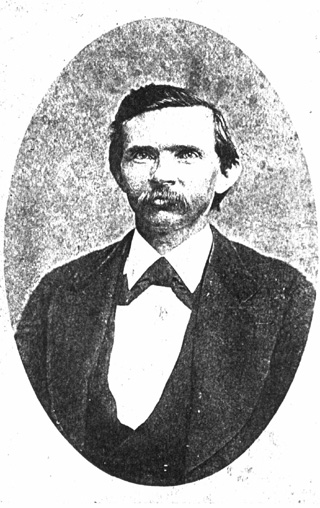 Captain Thomas Spight |
Thomas Spight served in the U. S.
Congress
1898-1911. He was an attorney and veteran of the Civil War.
Spight advised Col. Falkner concerning his will. His account was
that Falkner, his friend, came to him and told him that he knew Dick
Thurmond
planned to kill him and that he wanted to be sure that his property was
well settled. Spight suggested to Falkner that if he really
feared
Thurmond, he should carry a gun: but Falkner, replying that he had
already
killed enough men, refused to arm himself.
The Spight home still stands at 403 N. Union. |
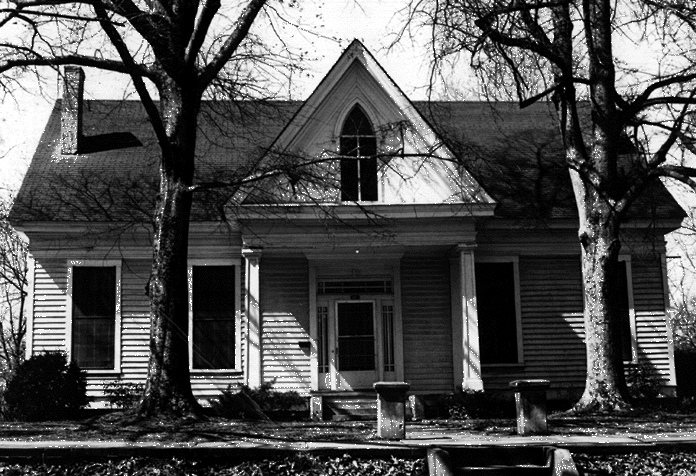 W. R. Cole - R. J. Thurmond Home |
Built in the 1850's, this house was occupied by the W. R. Cole Family during the Civil War. Mrs. Cole's letters are now an important record of some of the conditions in Ripley during the war. R. J. Thurmond later purchased the house. The house has had some additions made to it and has been renovated by the current owners, Mr. and Mrs. John Jeans. This picture was taken before the renovations and additions were made. This house still stands at 202 S. Jackson. |
|
|
R. J. Thurmond's daughter Mary, married Jim Harris. The following article appeared in the RIPLEY ADVERTISER on September 6, 1884: "Mr. J. C. Harris has given the finishing touches to his new residence in the western portion of town. We believe it now takes rank as the finest and most beautiful residence in the city." Some have said that Thurmond was trying to build a finer home for his daughter than Falkner had built for his daughter, Willie, who had married Dr. N. G. Carter in 1874. |
|
|
This home was built prior to the Civil War
and still
stands at 205 N. Jackson. Dr. Murry was not as
controversial
as William Faulkner's other great grandfather who lived in
Ripley.
Dr. Murry received his M. D. degree in 1855 at Jefferson Medical
College,
Philadelphia, PA. He served as a captain in the 34th Miss.
Infantry.
In addition to being a physician, Dr. Murry served two terms as county
treasurer, one term as sheriff and one term in the Mississippi House of
Representatives. Dr. Murry was active in the Methodist Church and
in the Masons.
John Faulkner wrote in MY BROTHER BILL: "Bill was one day short of five on the day we moved away from Ripley. He could talk by then, of course. Mother told me about one day we all ate dinner at Pa Murry's. That was Granny's father. Bill insisted on saying the blessing. They let him. He said 'Now I lay me down to sleep; I pray the Lord my soul to keep. If I should die before I wake, I pray the Lord my soul to take by W. C. Falkner. Granny said he sent his petition up signed. |
 The T. J. Cole Home |
This house which stands at 307 N. Jackson was built for John Y. Murry, Jr., in 1898. It became the home of the Thomas J. Cole family in 1909. T. J. Cole owned a department store on the northwest part of the square. |
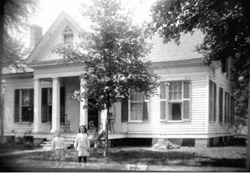 The Murry Falkner Home |
This house stood on the northwest corner of
Jackson
and Cooper Streets. After Murry Falkner was appointed as auditor
and treasurer of the Gulf & Chicago Railroad in 1898, he moved his
family to Ripley from New Albany. Two of William Falkner's
brothers
were born in Ripley. Murry Charles was born June 6, 1899 and John
W. T. III was born September 24, 1901. On September 24, 1902, the
Falkners moved to Oxford. William was 5, Murry 3, and John
1.
The fourth son, Dean, was born in Oxford.
|
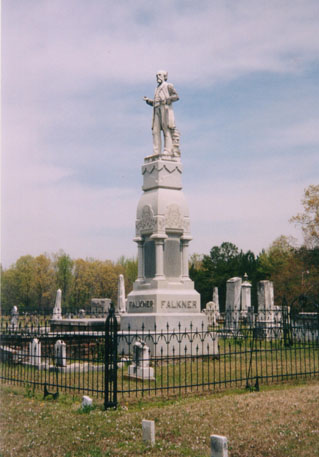 Ripley Cemetery Colonel William Clark Falkner 1825- 1889 |
One source says that the statue was
erected in
1892, at a cost of $2,022. by Col. Falkner's family. It was
the work of C. J. Rogers & Sons of Grand Junction, TN, with the
help
from Italian sculptors.
1823-1876 Soldier, Statesman, Citizen of the World For man's enlightenment he lived By man's ingratitude he died Pause here, son of sorrow; remember death" "This inscription had caused some furor on
the part
of the slayer's family, and a formal protest had followed. But in
complying with popular opinion, old Bayard had had his revenge:
he
caused the line 'By man's ingratitude he died' to be chiseled crudely
out,
and added beneath it: 'Fell at the hand of - Redlaw, Sept. 4, 1876."
(SARTORIS)According to one story, some time after
the statue
of Col. Falkner was erected, one of Thurmond's relatives, having had
too
much to drink, shot off the fingers of Falkner's extended hand.
|
 Ripley Public Library |
Ripley Public Library
Falkner family photographs and scrapbooks as well as first editons of the Colonel's books, including THE WHITE ROSE OF MEMPHIS, are housed in the town's library. Be sure to ask for a printout of Rapid Ramblings in Ripley that includes a map for a self guided tour of these sites. Hours of operation are: Monday,
Wednesday, Friday,
Saturday 9am - 5pm, Tuesday, Thursday 9am -8pm Closed Sunday.
|
